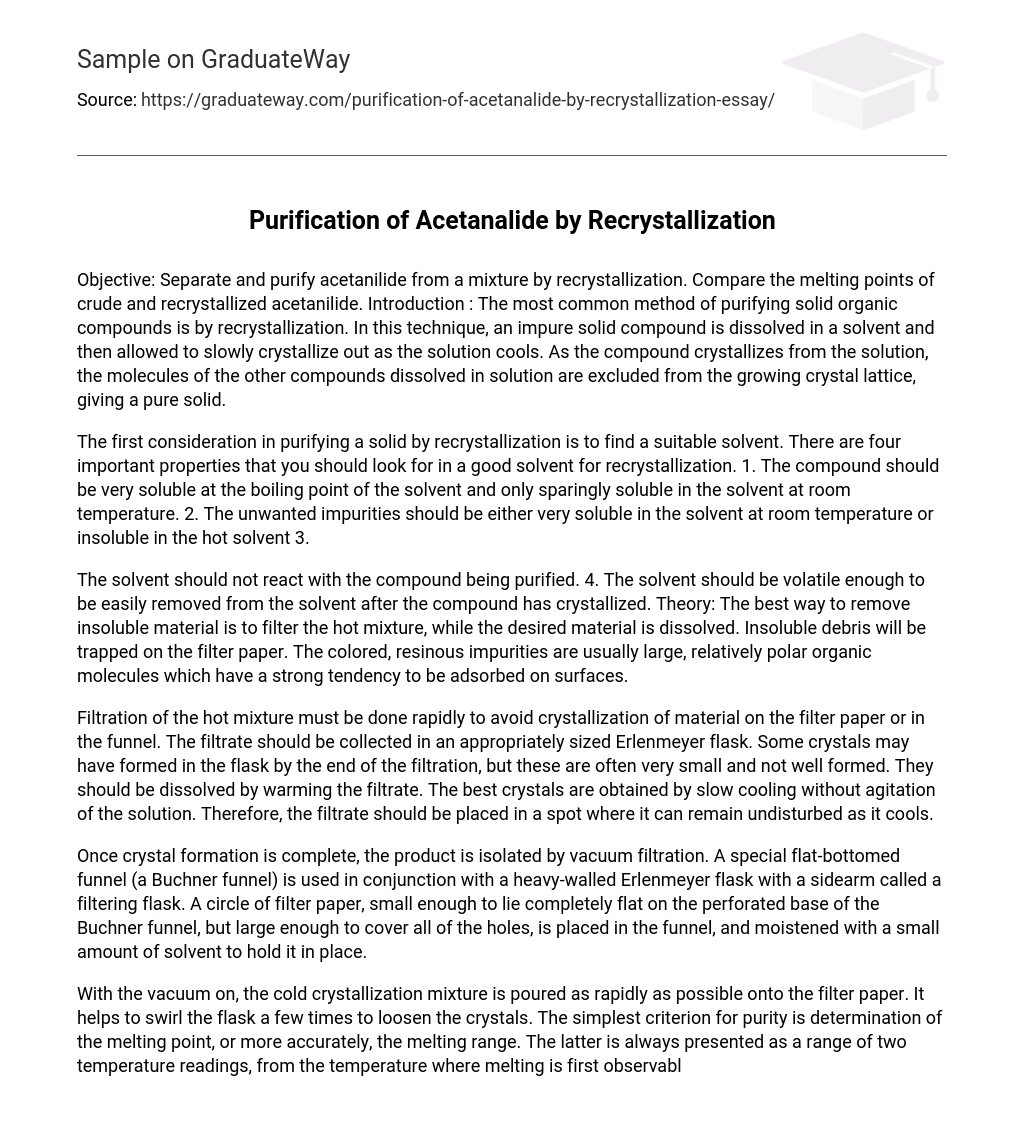Objective: Separate and purify acetanilide from a mixture by recrystallization. Compare the melting points of crude and recrystallized acetanilide. Introduction : The most common method of purifying solid organic compounds is by recrystallization. In this technique, an impure solid compound is dissolved in a solvent and then allowed to slowly crystallize out as the solution cools. As the compound crystallizes from the solution, the molecules of the other compounds dissolved in solution are excluded from the growing crystal lattice, giving a pure solid.
The first consideration in purifying a solid by recrystallization is to find a suitable solvent. There are four important properties that you should look for in a good solvent for recrystallization. 1. The compound should be very soluble at the boiling point of the solvent and only sparingly soluble in the solvent at room temperature. 2. The unwanted impurities should be either very soluble in the solvent at room temperature or insoluble in the hot solvent 3.
The solvent should not react with the compound being purified. 4. The solvent should be volatile enough to be easily removed from the solvent after the compound has crystallized. Theory: The best way to remove insoluble material is to filter the hot mixture, while the desired material is dissolved. Insoluble debris will be trapped on the filter paper. The colored, resinous impurities are usually large, relatively polar organic molecules which have a strong tendency to be adsorbed on surfaces.
Filtration of the hot mixture must be done rapidly to avoid crystallization of material on the filter paper or in the funnel. The filtrate should be collected in an appropriately sized Erlenmeyer flask. Some crystals may have formed in the flask by the end of the filtration, but these are often very small and not well formed. They should be dissolved by warming the filtrate. The best crystals are obtained by slow cooling without agitation of the solution. Therefore, the filtrate should be placed in a spot where it can remain undisturbed as it cools.
Once crystal formation is complete, the product is isolated by vacuum filtration. A special flat-bottomed funnel (a Buchner funnel) is used in conjunction with a heavy-walled Erlenmeyer flask with a sidearm called a filtering flask. A circle of filter paper, small enough to lie completely flat on the perforated base of the Buchner funnel, but large enough to cover all of the holes, is placed in the funnel, and moistened with a small amount of solvent to hold it in place.
With the vacuum on, the cold crystallization mixture is poured as rapidly as possible onto the filter paper. It helps to swirl the flask a few times to loosen the crystals. The simplest criterion for purity is determination of the melting point, or more accurately, the melting range. The latter is always presented as a range of two temperature readings, from the temperature where melting is first observable to that where melting is complete. For pure compounds, complete melting normally occurs over a very narrow range, often





